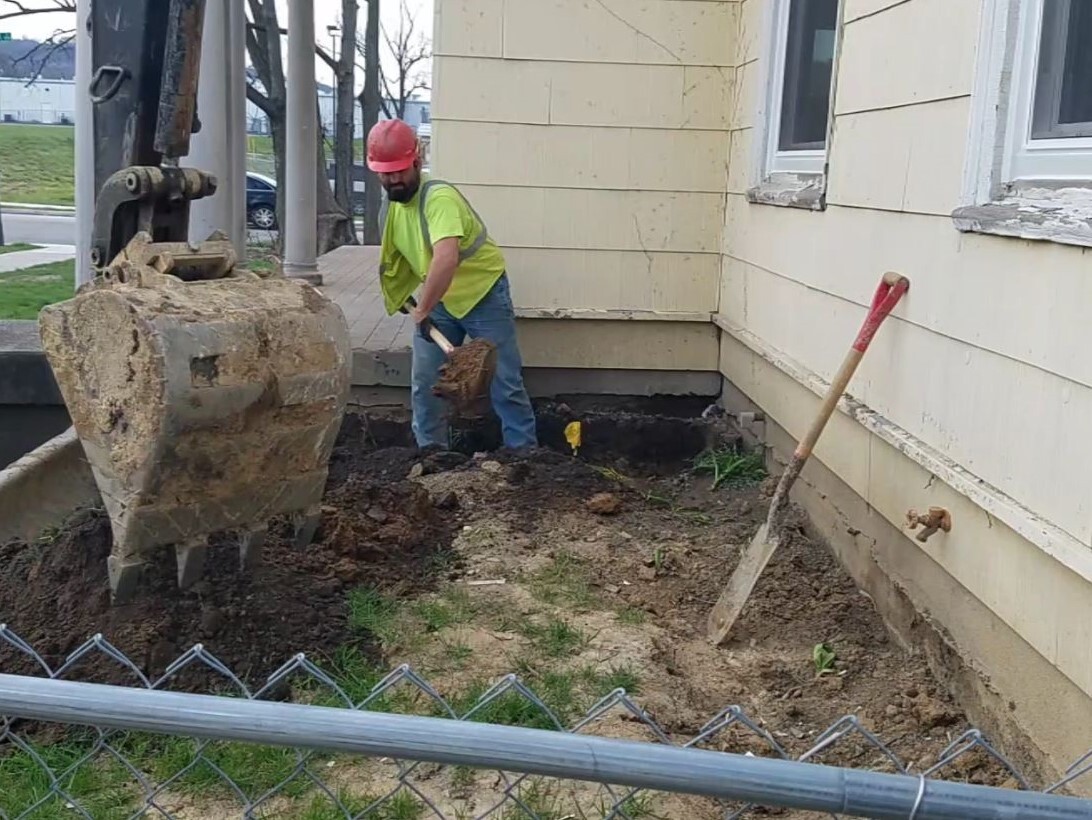CINCINNATI — Venus Kent knew she had plenty of work ahead of her when she bought her first house, a $10,000 fixer-upper in Camp Washington.
“The house had sat vacant for at least seven years before I bought it,” she said. “And it had been ransacked, stripped of all metals. Anything that they think is valuable. Including the water meter.”
When Kent called Greater Cincinnati Water Works, or GCWW, to get a replacement meter, she discovered the house would need even more fixing than she anticipated.
The missing meter was considered a disturbance in the line. And because GCWW knew the service line carrying water into the house was made of lead, that disturbance meant Kent had to replace it.
“That definitely wasn’t something I had in my budget to do,” she said. “I didn’t even know I needed to do it.”
Fortunately for Kent, GCWW knew exactly where her lead service line was located and had a program to help her cover the cost of replacement.

But many utility companies across the country don’t have the detailed maps that GCWW has, said Verna Arnette, GCWW’s deputy director. Those utilities end up wasting time and money, she said, by digging up water lines only to discover they are not lead at all.
A Tri-State group called Confluence aims to help. Confluence is the Ohio River Valley region’s water technology innovation cluster. It issued a “Call for Abstracts” to find a technology that utility companies can use above ground to determine the material used in underground pipes so there’s no need to dig. The organization is on track to have 20 or more submissions, according to Melinda Kruyer, Confluence's executive director.
“Having this type of technology, especially something that is easy for a utility person to use. You know, it’s battery-operated, it’s portable, almost like a metal detector,” Arnette said. “Having something available that they could easily identify material and figure out what is the scope of our problem, I think, would be immensely, immensely helpful.”
Tri-State water know-how
The United States, after all, has an estimated 6 million lead service lines, said Jeff Swertfeger, GCWW’s superintendent of water quality and treatment. That includes more than 600,000 in Ohio, Arnette said, and roughly 40,000 in GCWW’s service area.
Revised federal drinking water regulations require utilities across the country to create an inventory of their service lines to figure out where lead lines are located, Swertfeger said, and then develop removal plans.
“The intention of the EPA is to make that as quick and as effective as possible,” he said. “They can focus on where the lines are and what they need to do to get those lines out of there.”
Having technology to quickly identify and locate lead lines would go a long way to help utilities across the country meet those federal requirements, Swertfeger said, and improve their systems in the years to come.
As a regional organization focused on water technology, Confluence is the logical group to look for a solution, said Scott Koorndyk, president of the Entrepreneurs' Center in Dayton and one of the founding members of Confluence.

“It is a problem for the utilities, no question. It is a problem for municipal governments, clearly. It is a problem for the homeowners or for the property owners,” he said. “We’ve got people who understand the problem intimately. Now it’s trying to figure out a simple as possible way to address the problem.”
The business that succeeds in creating that technology will have a big market for it immediately, Koorndyk said. And if Confluence’s “Call for Abstracts” helps identify the solution that utilities need, that will help raise the Tri-State’s profile, he said, as a hub for water technology innovation.
“It takes a village really to solve these kind of problems,” Koorndyk said. “And that village is Confluence.”
In the meantime, GCWW is working to educate its customers about their service lines and their options if those service lines are lead.
‘Nothing to panic over’
The utility’s website has a searchable map that shows where lead service lines are located and information about how property owners can identify whether the service lines in their basements are made of lead.
Customers also can use the website to request a free test kit to determine whether their drinking water contains lead.
And there is information about the program that Kent used to help cover the cost of replacing her lead service line back in 2018.
GCWW paid for 40% of the cost of replacing the line, she said, and allowed her to pay for the balance by spreading out the payments over her property taxes for up to 10 years.
“That just made it affordable for me to do the work,” Kent said, adding that she was relieved to get it done. “Especially when you hear so much about what’s happening in other cities in the United States, like with Flint. We know what lead does.”

Lead can create health problems for everyone, but it’s particularly dangerous for young children and pregnant women, Arnette said. Cincinnati has been working for years to prevent the kind of crisis that Flint, Michigan, had, she said, and GCWW is determined to keep removing as many lead pipes as it can.
“It’s nothing to panic over,” Swertfeger added. “We do have really easy solutions for people, and we’re really trying to go out of our way to work with people to get these out so that we can protect the community.”
Now that Kent has been through the process, she said she figures it’s a “given” that homes in Greater Cincinnati’s older communities like Camp Washington will have lead pipes as hers did.
“I think the more important thing is making it affordable for homeowners to get their lines replaced,” she said. “Because I don’t think it should be an option. I think all lead lines should be replaced.”
More information about lead and drinking water is available on Greater Cincinnati Water Works website.
More information about Confluence is available online, too.
Lucy May writes about the people, places and issues that define our region – to celebrate what makes the Tri-State great and shine a spotlight on issues we need to address. To reach Lucy, email lucy.may@wcpo.com. Follow her on Twitter @LucyMayCincy.





